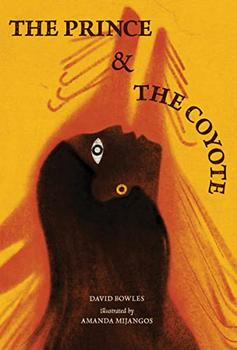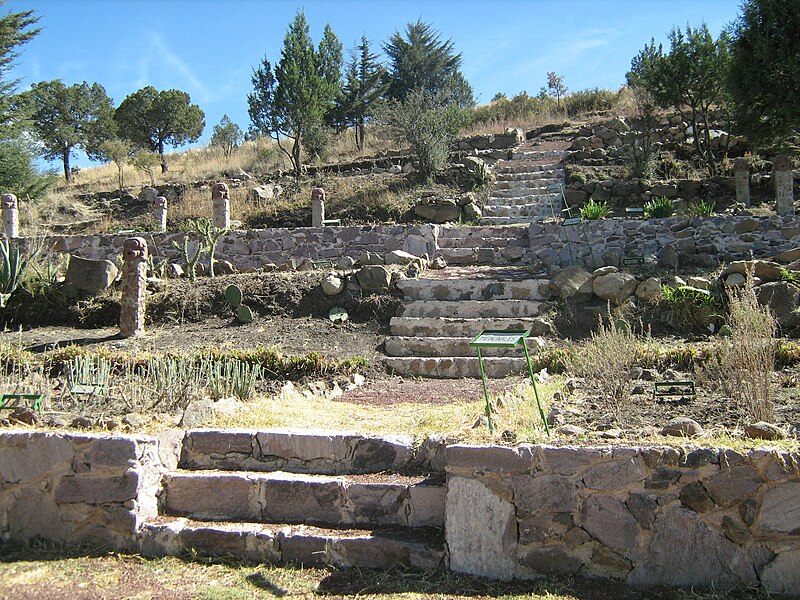Summary | Excerpt | Reviews | Beyond the Book | Read-Alikes | Genres & Themes | Author Bio

This article relates to The Prince and the Coyote
 In David Bowles' novel The Prince and the Coyote, Prince Acolmiztli is forced to flee his beloved city of Tetzcoco after it is overrun by enemies. Acolmiztli, later known as Nezahualcoyotl, was a real historic figure still famous today, and his city was one of the most important in the Aztec Empire.
In David Bowles' novel The Prince and the Coyote, Prince Acolmiztli is forced to flee his beloved city of Tetzcoco after it is overrun by enemies. Acolmiztli, later known as Nezahualcoyotl, was a real historic figure still famous today, and his city was one of the most important in the Aztec Empire.
Tetzcoco (also spelled Texcoco or Tezcoco) is located in the Valley of Mexico, to the east side of Lake Tetzcoco. The region was inhabited by a diverse population of Nahuatl-speaking tribes who migrated to the area after the collapse of Toltec power in the 12th century. The specific group who made Tetzcoco their capital and controlled most of the eastern part of the Valley were the Acolhua.
Advances in agriculture, such as the construction of terraces and irrigation canals, provided a surplus of food. The city was also well-placed for trade, and the extensive network it developed allowed its inhabitants to grow wealthy. However, in 1418 Tetzcoco was conquered by the Tepanecs, who ruled the city-state of Azcapotzalco. The king was killed and his son was forced to flee, as depicted in The Prince and the Coyote.
While in exile, Nezahualcoyotl joined forces with the Mexica city-state of Tenochtitlan (the king of which was his uncle, Itzcoatl). Along with the Tepanec city of Tlacopan, the allies took the opportunity to revolt against Azcapotzalco after its king died in 1426 and his heirs began to fight over who would succeed him, and Nezahualcoyotl reclaimed his home city. The Triple Alliance didn't dissolve after this victory, however. Instead, they went on to take control over the entire region, forming the Aztec Empire.
Under Nezahualcoyotl's leadership, Tetzcoco became known as a cultural and intellectual center. The king formed a government council to encourage the development of science and the arts, and embarked on several building projects, including a temple and palace, as well as more practical constructions such as an expansive system of aqueducts both within and outside the city. Nezahualcoyotl was deified after his death, and his city continued to prosper.
However, the Triple Alliance had never been an equal partnership between the three city-states, and Tenochtitlan's dominance caused resentment. By the time the Spanish arrived in 1519, relations between Tetzcoco and Tenochtitlan were shaky, as were Tetzcoco's internal politics. Ixtlilxóchitl, one of two claimants to Tetzcoco's throne, saw Hernán Cortés' invasion as an opportunity. He allied with Cortés, who helped him to gain power, and assisted the Spanish in attacking Tenochtitlan. This gave Ixtlilxóchitl success in the short term, but led to the destruction of the Aztec Empire and Spain's colonization of Mexico.
Today, the remains of the pre-Columbian city of Tezcoco are mostly buried under the modern city of Texcoco de Mora, near Mexico City. However, the ruins of the imperial gardens Nezahualcoyotl designed and built outside the city can still be visited.
Site of the imperial gardens of the ruler Nezahualcoyotl
Photo by Misaelos (CC BY-SA 3.0)
Filed under Places, Cultures & Identities
![]() This article relates to The Prince and the Coyote.
It first ran in the November 15, 2023
issue of BookBrowse Recommends.
This article relates to The Prince and the Coyote.
It first ran in the November 15, 2023
issue of BookBrowse Recommends.
Most of us who turn to any subject we love remember some morning or evening hour when...
Click Here to find out who said this, as well as discovering other famous literary quotes!
Your guide toexceptional books
BookBrowse seeks out and recommends the best in contemporary fiction and nonfiction—books that not only engage and entertain but also deepen our understanding of ourselves and the world around us.